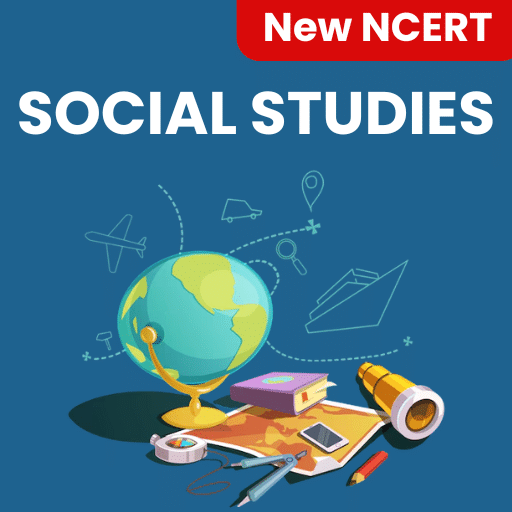Short & Long Question Answers: Grassroots Democracy- Part 3: Local Government in Urban Areas | Social Studies for Class 6 PDF Download
Short Question Answers
Q1: Why are cities like Kolkata more complex than villages?
Ans: Cities like Kolkata are busier and more crowded than villages, with tall buildings, noisy streets, and diverse people. Urban areas host varied communities, unlike simpler rural setups that typically consist of fewer people, mostly farmers, with less diversity.
Q2: How does this figure show India’s governance structure?
Ans: The figure maps India’s governance as a pyramid: local at the base—rural Panchayats, urban bodies—then state, with the national government at the top. Rural governance includes Gram Panchayats, Samitis, Zila Parishads; urban areas have Nagar Panchayats, Municipal Councils, and Corporations. It shows how power starts close to people, rising to national level decisions that balance local input with national governance across a population of 1.4 billion.
Q3: What are wards, and what do they do in urban areas?
Ans:
- Wards are small city units with committees managing local tasks.
- They organize health camps, fight against single-use plastics, and fix issues like leaks, drains, and roads.
- Wards play a similar role to rural Panchayats but at a larger urban scale, with their functions differing by state rules.
- They help keep cities running smoothly and provide residents a voice in urban governance.
Q4: What functions do urban local bodies perform?
Ans:
- Urban local bodies manage infrastructure, including roads and drains, and handle waste collection and disposal.
- They oversee government schemes, collect taxes and fines, and plan for social and economic development.
- These bodies ensure cities remain livable by addressing essential services that affect daily life for millions of people.
Q5: How do citizens help urban local bodies work better?
Ans: Citizens help urban bodies by sorting waste for easier pickup, reporting leaks to save water, and following guidelines for waste segregation. These actions make urban bodies more efficient, as active participation and caring about local issues strengthen the community and improve overall city management.
Q6: What makes the Madras Corporation historically significant?
Ans: Established in 1688, the Madras Corporation (now Greater Chennai) is India’s oldest municipal institution. Its foundation was laid by the East India Company with a charter that covered the town of Fort St. George. The Madras Corporation set the standard for urban governance in India.
Q7: Why has Indore been India’s cleanest city for seven years?
Ans: Indore’s Municipal Corporation has maintained its status as the cleanest city in India under the Swachh Survekshan survey. Citizens play an active role in waste sorting and reporting issues, boosting garbage collection and cleanliness efforts. This community collaboration, with support from local leadership, has kept the city clean.
Q8: How do Municipal Corporations differ from other urban bodies?
Ans:
- Municipal Corporations govern large cities with populations over 10 lakh, handling complex needs like infrastructure, sanitation, and public health.
- Municipal Councils serve cities with populations between 1 and 10 lakh, while Nagar Panchayats manage smaller towns.
- The key difference lies in the scale and complexity of governance in relation to population size.
Q9: What funds urban local bodies’ activities?
Ans: Urban local bodies are funded through local taxes, fines, and fees for services like waste collection and water supply. These funds help maintain infrastructure, public health, and other essential services in urban areas, linking citizens' contributions to the upkeep of the city.
Q10: How does participatory democracy work in urban areas?
Ans:
- Participatory democracy in cities means that residents actively engage with urban bodies—electing representatives, reporting issues, and following local regulations.
- Citizens help improve their surroundings, making democracy work effectively and ensuring cities run smoothly, much like rural Panchayats but adapted for urban life.
Long Question Answers
Q1: How do urban local bodies contribute to the development of cities?
Ans:
- Urban local bodies manage infrastructure like roads, drains, and public transport.
- They oversee waste management, including garbage collection and disposal.
- Urban bodies maintain public spaces, parks, and recreational areas.
- They implement government schemes related to social and economic development.
- Local taxes and fines are collected to fund these services and infrastructure.
- Citizens contribute by paying taxes and following waste segregation rules.
- Active participation from residents ensures smooth operations and better service delivery.
- Local bodies help in managing public health services and emergency responses.
Q2: How do urban and rural local bodies differ in governance and participation?
Ans:
- Urban local bodies manage larger, more diverse populations and complex issues.
- Rural local bodies operate in smaller, closely-knit communities.
- Urban areas require formalized, bureaucratic governance structures.
- Rural governance is more direct and personal, with easier access to local leaders.
- In urban areas, decisions involve larger-scale infrastructure and public services.
- Rural communities often participate more directly in decision-making.
- Urban bodies handle diverse needs like transportation, housing, and sanitation.
- Rural Panchayats focus on local issues with more immediate community involvement.
Q3: What role do Municipal Corporations play in large cities?
Ans:
- Municipal Corporations govern cities with populations over 10 lakh people.
- They manage large-scale infrastructure projects like roads, drainage, and transport.
- They ensure the provision of public health services and sanitation.
- Municipal Corporations collect taxes and fines to fund urban services.
- They oversee social welfare programs and educational initiatives.
- These bodies manage urban planning, zoning, and land use.
- They enforce laws related to construction, safety, and public health.
- Municipal Corporations are vital in shaping the city’s growth and sustainability.
|
44 videos|176 docs|28 tests
|
FAQs on Short & Long Question Answers: Grassroots Democracy- Part 3: Local Government in Urban Areas - Social Studies for Class 6
| 1. What is grassroots democracy in the context of local government? |  |
| 2. How is local government structured in urban areas? |  |
| 3. What role do local government representatives play in urban areas? |  |
| 4. How can citizens participate in local government decision-making? |  |
| 5. What are the benefits of grassroots democracy in urban local governance? |  |



























